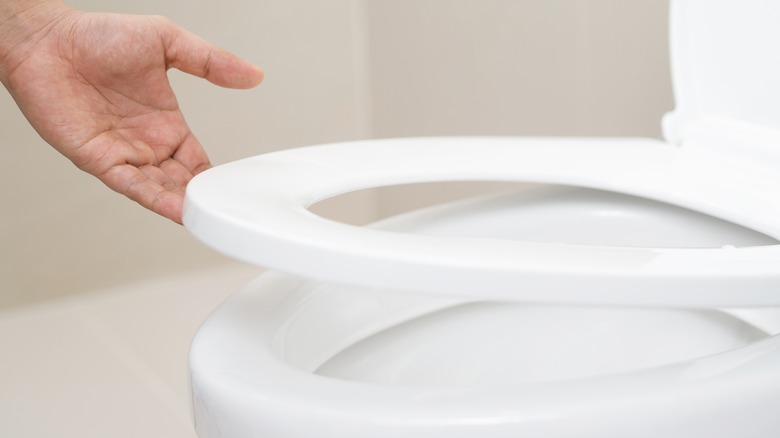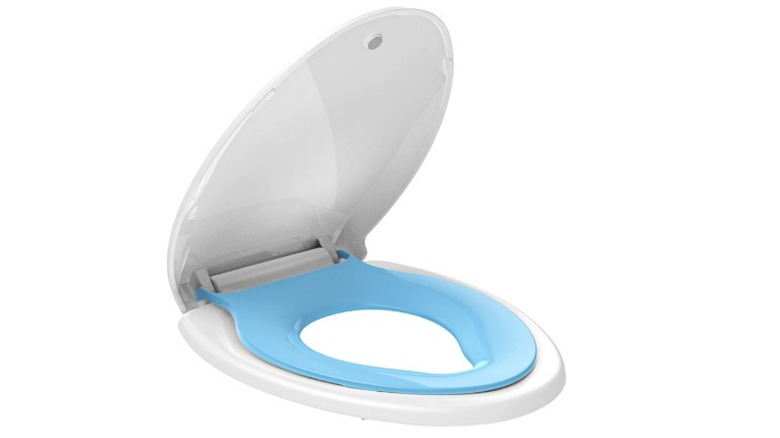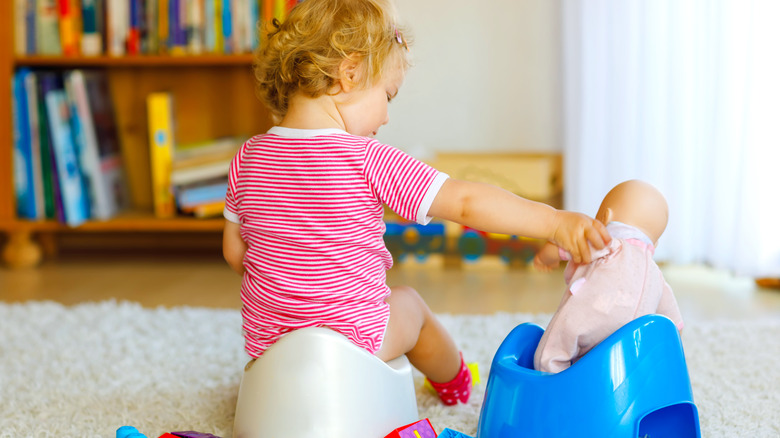How To Install A Potty Seat Onto Your Toilet For Your Little Ones
We may receive a commission on purchases made from links.
Installing a built-in potty seat can be a game-changer when it comes to potty training your children. It eliminates the need for a separate training toilet and makes the transition to a regular toilet much easier. These built-in seats are designed with a smaller lid that can be flipped down when your child needs to use the potty, and then flipped back up for adults. They often have a magnetic latch to prevent the small lid from falling down when not in use. Installing a built-in toilet seat is pretty much like installing a regular toilet seat, so it can be done in as little as 30 minutes.
One of the major advantages of a built-in training seat is that it allows you to skip the potty stage and transition directly from diapers to using the porcelain throne. It's also easy to clean because all you need to do is flush. Because the installation process can vary depending on the brand, make, and model, remember to always refer to the manufacturer's guide before you start to take your toilet apart.
How to install a built-in potty seat
To install a built-in potty seat, you'll want to make sure that you have the right size for your toilet shape. Seat sizes are either elongated or round, so make sure to measure to determine the correct size. Once you have the seat, remove the old toilet seat and attach the new one with the provided hardware. Make sure the seat is positioned correctly before tightening the plastic bolts on the underside of the toilet. Double check that all the screws and nuts are securely tightened by giving the seat a gentle shake to make sure it's stable. If necessary, make any adjustments or further tighten the nuts.
In addition to fostering independence in your child, a built-in potty training seat is a space-saving solution for smaller bathrooms. It not only familiarizes children with using a regular toilet, but can help promote good bathroom hygiene habits. Built-in training seats have slow-closing lids to prevent slamming, and can be a long-term solution since the potty training section is removable. This allows the seat to be used even after the kids have outgrown it.
Built-in versus potty ring versus stand-alone
Built-in seats are convenient as they are installed directly on the regular toilet, saving space and helping children become accustomed to using a regular toilet. Potty training rings are separate seats that can be placed on top of a regular toilet seat. They come in different sizes and designs, and are portable, making them ideal for travel. However, both built-in seats and potty rings may pose a challenge for toddlers who struggle to reach the toilet in time, necessitating the use of a step stool for independence.
On the other hand, standalone potty training seats are individual chairs designed specifically for potty training. They often feature popular cartoon characters and have a compact size that makes them less intimidating for children. These chairs are portable and suitable for travel. However, it's important to note that they are not connected to plumbing, so you will need to empty and clean them yourself. Additionally, if your bathroom is already crowded or small, finding space to store standalone potty seats could be a concern.


